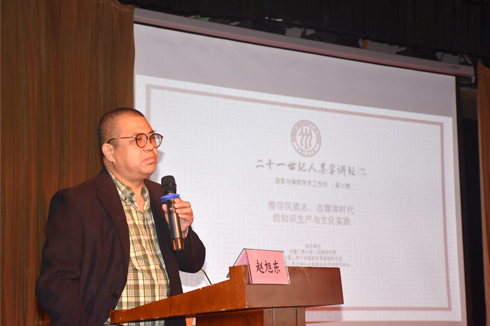Traditional village protection should heed local factors
 As the Chinese sociologist Fei Xiaotong once put it: “At the fundamental level, Chinese society is rural.” Village culture, reliant on its distinct rural qualities, is the root of traditional refined Chinese culture. However, in the process of pursuing modernity, the rural distinction of Chinese society is fading with the acceleration of the country’s urbanization.
As the Chinese sociologist Fei Xiaotong once put it: “At the fundamental level, Chinese society is rural.” Village culture, reliant on its distinct rural qualities, is the root of traditional refined Chinese culture. However, in the process of pursuing modernity, the rural distinction of Chinese society is fading with the acceleration of the country’s urbanization.
In April 2012, the Notice on Conducting Investigations of Traditional Villages jointly released by China’s Ministry of Housing and Urban-Rural Development, Ministry of Culture (now Ministry of Culture and Tourism), National Cultural Heritage Administration and Ministry of Finance signified that the Chinese government had officially initiated the villages’ protection projects. From 2013 to 2018, the No. 1 Central Document (an annual document released by the CPC Central Committee on issues of agriculture, rural areas and farmers) for six consecutive years explicitly reiterated the importance of traditional village protection and formulated guidelines.
By early December 2018, a total of 4,153 Chinese villages had been inscribed, in four batches, onto the national list for protection.
Duan Village, located in western Jingxing County, Hebei Province, is famous for its thousands of years of history. Convenient to traffic, it has been a junction at the intersection of Shanxi and Hebei provinces since the ancient times. There are abundant cultural legacies. The Ming and Qing style dwellings, temples, garret and bridges are particularly eye-catching. In 2016, the village was inscribed among the fourth batch onto the national list for traditional village protection. However, the protection of the village has encountered quite a few dilemmas.
Although the village was inscribed on the national list for protection as early as 2016, it was not until October 2018 that the contractor with the successful bid sent an engineering team to start the renovation of the ancient houses, temples and other ancient buildings, and the team was given a deadline to complete all the work within three months. However, since the village is located in the Taihang Mountains where the temperature is lower than that in the plain, the local people usually would not choose to build houses or roads in the cold winter. The request that the construction team work in this period meant that they had to work overtime before the winter arrived, completing within three months. Otherwise, once the weather turned cold, it would be more difficult to whitewash walls and tile roofs.
Furthermore, the local people were not truly participating in the village protection. Both the village committee and the local people, in a large sense, were detached from the protection projects. After all, the financing did not originate from the local government, which easily led to its loss of discourse power. Obviously, the state plays a leading role in implementing the projects of protection. Without the state funds, the “financially prudent” local people would not be willing to invest a lot of money to repair the ancient buildings in the village considering the relatively high maintenance cost. They thus allowed the engineering team to conduct the construction at its own discretion based on the design standards of external design institutes and even unified requirements. However, such standards would sometimes ignore the unique local conditions and result in unexpected “protective damage.”
While the traditional village protection has become an issue of social concern and remarkable achievements have been made, the following issues are noteworthy.
First, the construction schedule should be properly set. Especially for those restoration projects of ancient or old buildings, improper arrival time of the engineering team or an insufficient construction period are likely to impair the quality of the projects. Second, be it the tangible or the intangible cultural legacy, once divorced from the local daily life, it is little more than a sample in a museum without its due liveliness. Therefore, special attention needs to be paid to those cultural legacies closely related to daily life, and enthusiasm of the local people should be encouraged. For example, the reason that the local people of Duan Village took the initiative to donate 140,000 yuan to renovate a local temple was because the temple held an important position in the local people’s ritual life. The last is that the relationship between protection and development should be properly addressed. We do not deny the huge effect that modernity brings when it enters the village. In fact, once a village tries to attract visitors through tourism, it inevitably has to make moderate concessions, adjustments and even acceptances. But it should be noted that such concessions, adjustments and acceptances do not mean blind following or catering. The unique characteristics of the village should be retained, otherwise the renovations would lead to “a thousand villages with the same face.”
Luo Shijiong and Zhao Xudong are respectively from the Institute of Anthropology and the Center for Studies of Sociological Theory & Method at Renmin University of China.
(edited by BAI LE)
